Our dataset[1] was collected in real driving scenarios(Figure 1) with the objective of studying effective identification of drivers' driving scenarios and behaviors. It includes two modalities of driving signals: six-axis inertial signals(Figure 2) and electrocardiogram (ECG) signals(Figure 3). The six-axis inertial signals, captured by sensors like accelerometers and gyroscopes, provide real-time information on steering wheel angle and vehicle acceleration. ECG signals, on the other hand, have various applications in driving scenarios such as fatigue driving detection, emotion detection, driving behavior analysis, and biometric identification.
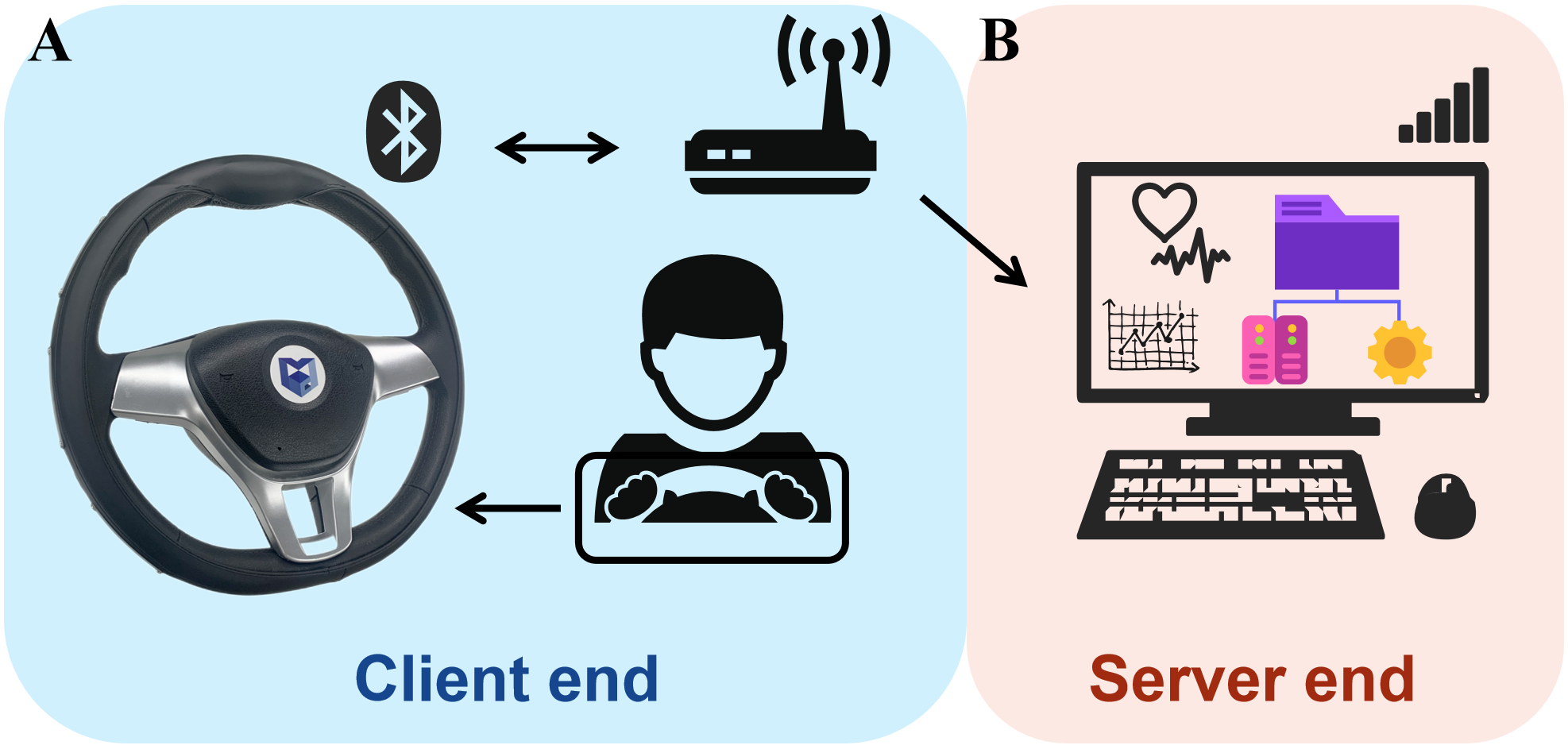
Figure1: Schematic diagram of driving signal acquisition. A shows the process of data collection while the driver is holding the steering wheel and uploading them to the gateway via Bluetooth. B shows the process of receiving data on the server side and integrating and storing them.
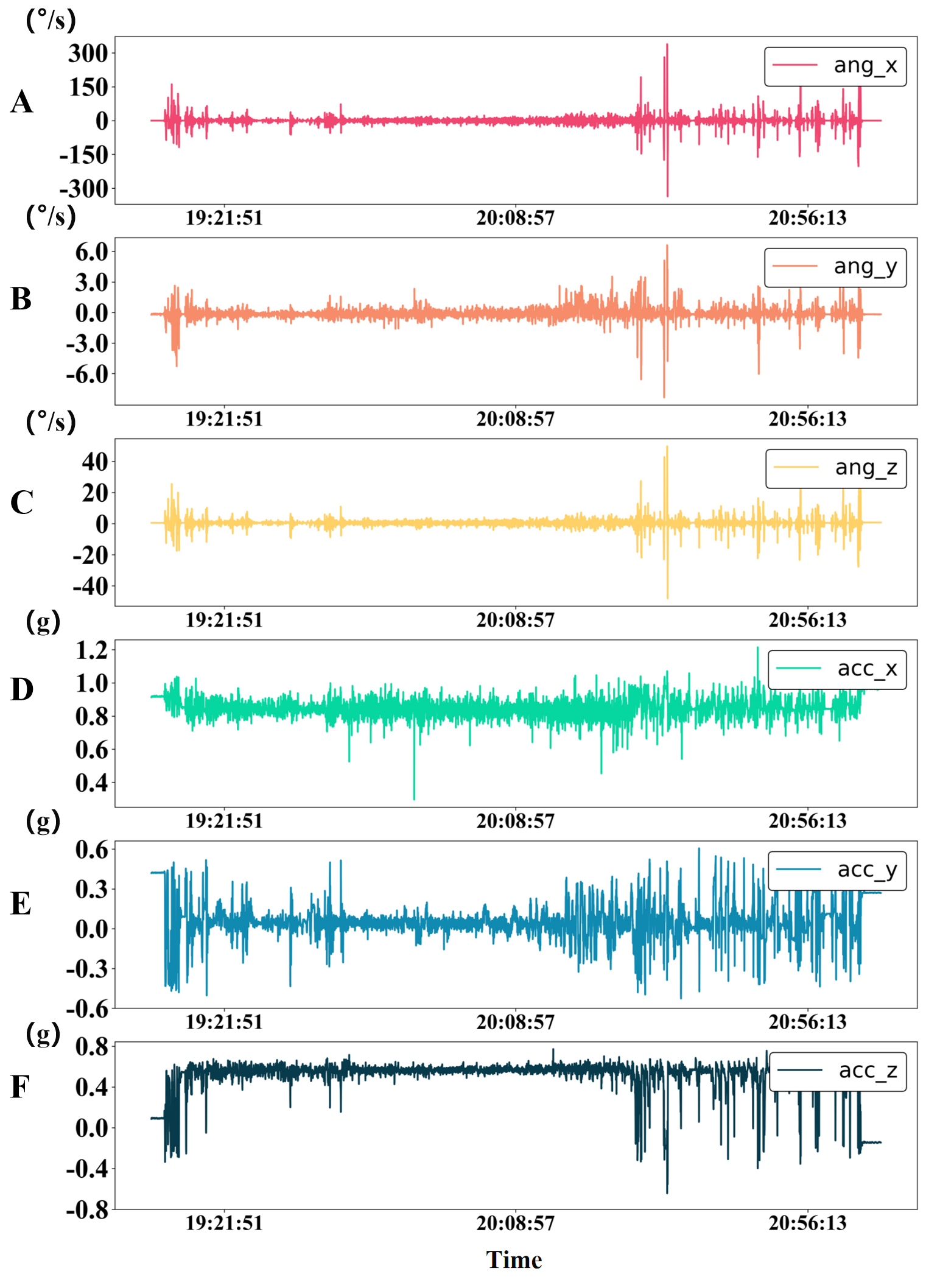
Figure2: Examples of six-axis data. The figure contains six sets of signals, where ang_x(A), ang_y(B), and ang_z(C) represent three-axis angular velocity (x, y, and z denote three mutually perpendicular directions) with units of degrees per second, and acc_x(D), acc_y(E), and acc_z(F) represent three-axis acceleration with units of g-force.
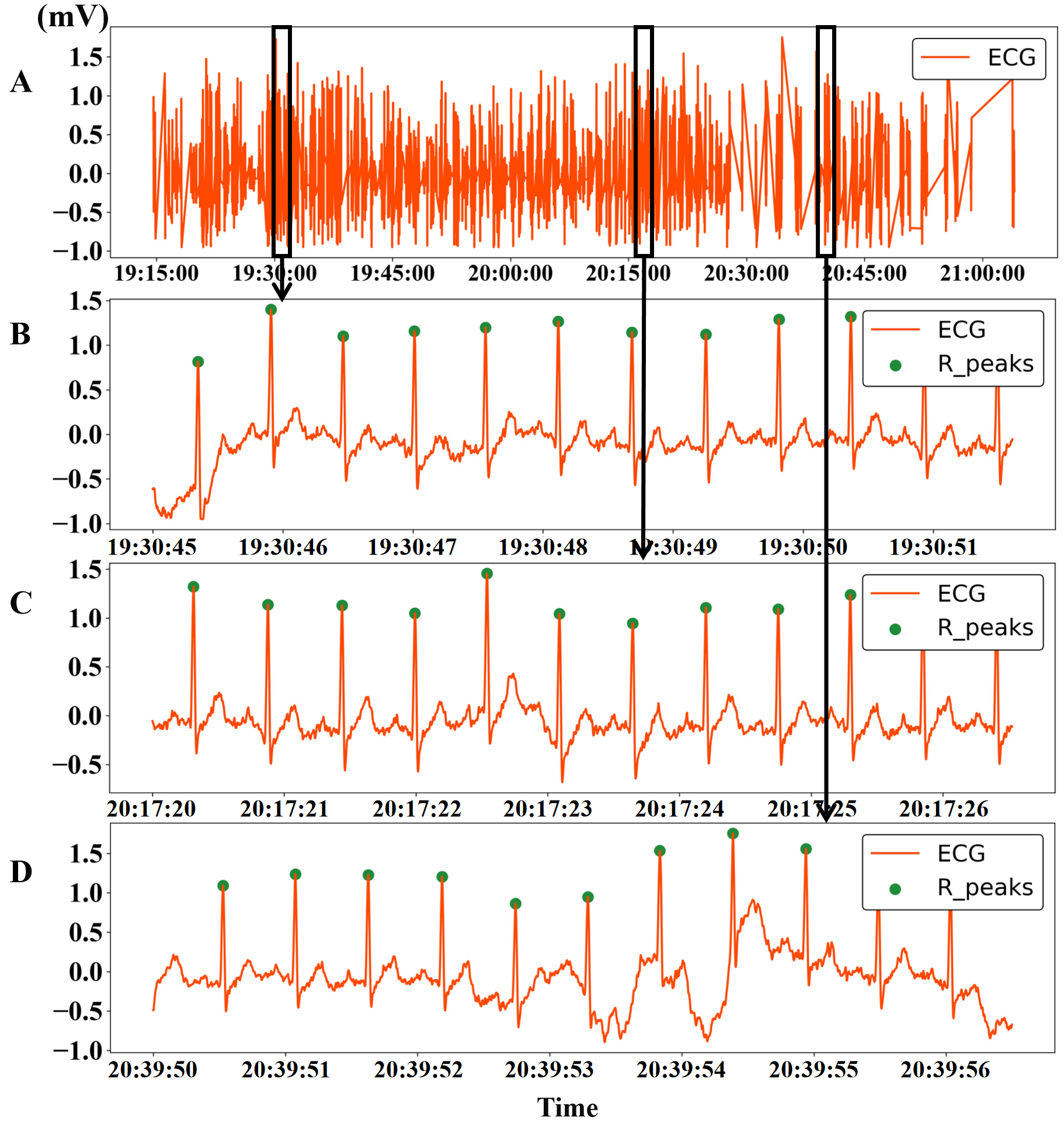
Figure3: Examples of ECG data. (A) shows the driver's ECG signals during the same trip as Figure 2, while (B-D) provide a more detailed representation of certain time periods within the top graph.
The dataset is organized into trips, with each trip representing a driving process of a professional driver on a specified route. Four specified routes are designed in the dataset, and data collection for each driver spans over several months. The participating drivers have no relevant diseases that may affect data collection, and they generally fall within the age range of 40-55 years old, with considerable driving experience.
In addition, it's worth mentioning that our dataset has also collected skin conductance signals (also known as electrodermal activity or EDA), which will be added to the dataset in the near future.
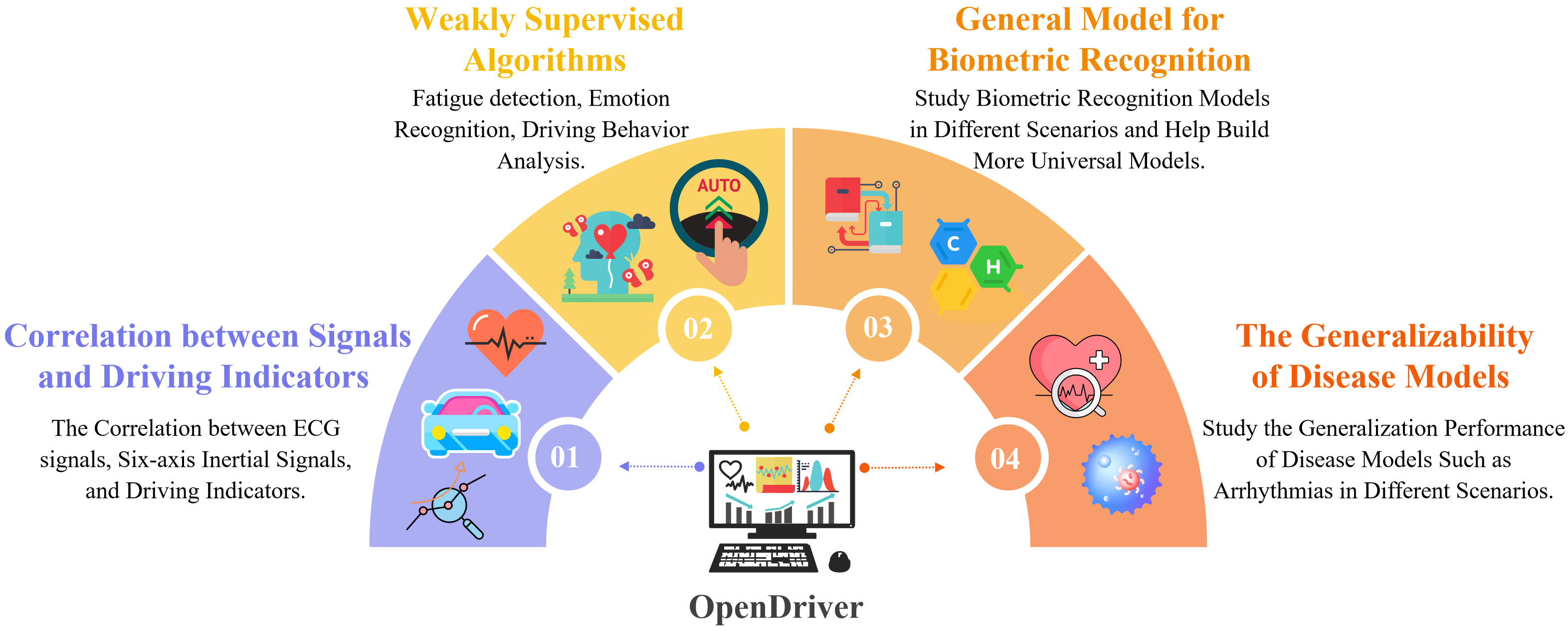
Figure4: Several future directions. Several research directions can be explored in this field using the presented dataset, including the development of weakly supervised and transfer learning algorithms for fatigue detection, emotion recognition, and driving behavior analysis, building a general model for biometric recognition, studying the generalizability of disease models, and exploring the relationship between ECG signals, six-axis inertial signals, and driving behavior. The dataset can serve as a valuable resource for the research community to develop novel algorithms and models for driver state detection and behavior analysis.
Future research in this field can focus on several directions(Figure 4). Firstly, the development of weakly supervised and transfer learning algorithms using the dataset for more precise, reliable fatigue detection, emotion recognition, and driving behavior analysis. For fatigue and stress detection, weak labels such as driving duration and HRV feature changes can be provided to support researchers in driver state recognition-related work. In addition, additional information can be obtained from features such as steering wheel angle provided by the six-axis inertial signal. At the same time, EDA data has also been collected and included to further enhance the dataset's validity and practicality.The second research direction is to build a general model for biometric recognition. The dataset includes long-term records of multiple individuals, covering physiological signal changes resulting from long-term driving. These data can be used to study biometric recognition models in different scenarios and help build more universal models.The third direction is to use the dataset to study the generalizability of disease models such as arrhythmias in different scenarios. The dataset includes arrhythmia signals that occur during driving, which can be used to study the generalization performance of disease models such as arrhythmias(Figure 5) in different scenarios.Finally, the relationship between ECG signals, six-axis inertial signals, and driving behavior can be explored. The correlation between ECG signals, six-axis inertial signals, and driving indicators, such as speed, acceleration, and lane keeping, can be analyzed to gain a deeper understanding of the potential mechanisms underlying driver states and behavior. In addition, this dataset can be made available to the research community to encourage the development of novel algorithms and models for driver state detection and behavior analysis. It can also be used as a benchmark dataset and evaluation metric for future research in this field.
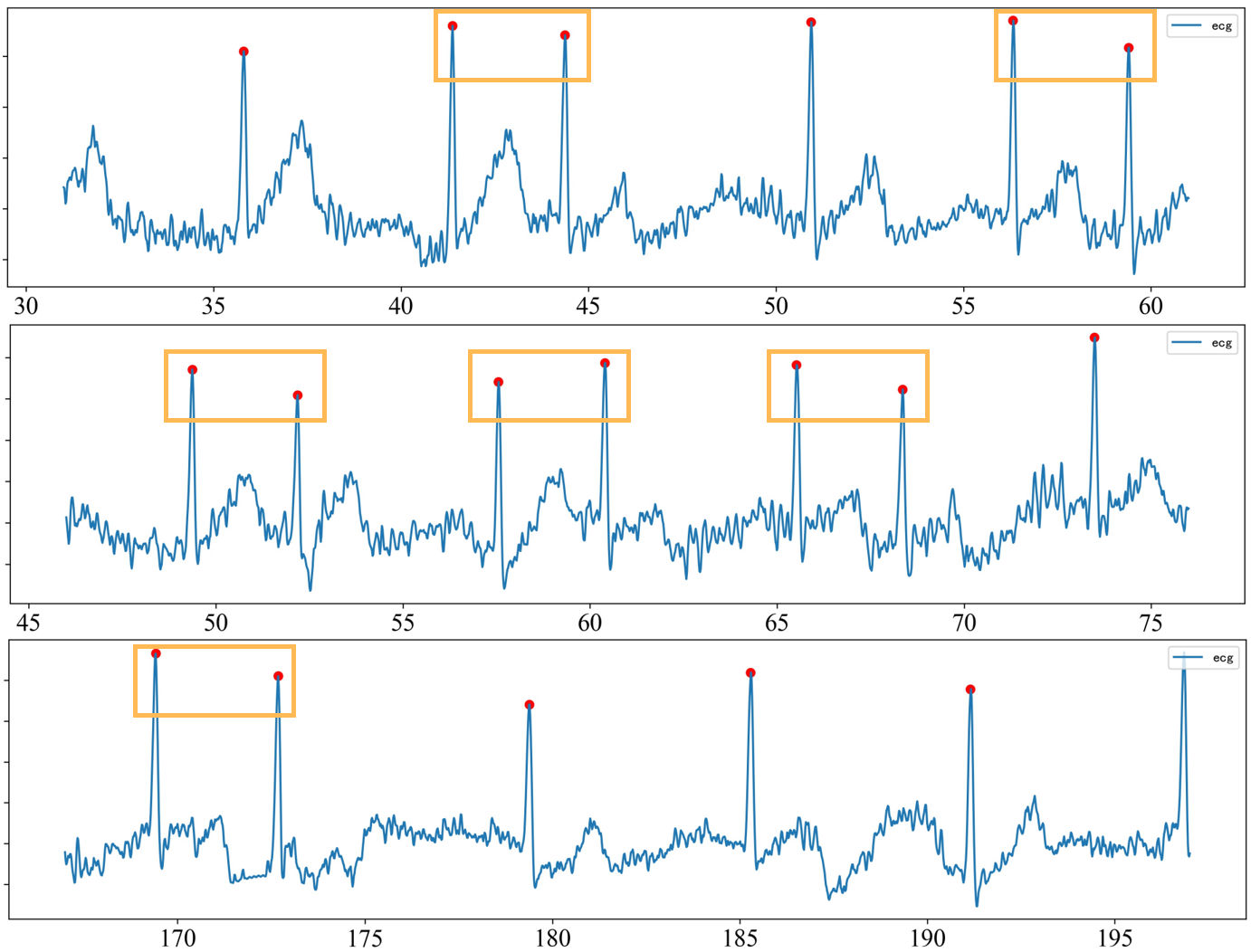
Figure5: ECG of Arrhythmia. The figure showcases three cases of arrhythmia from this dataset, with the time period of arrhythmia highlighted in rectangular boxes.
Reference:
[1] Liu, D., & Li, S. (2023). OpenDriver: an open-road driver state detection dataset. arXiv preprint arXiv:2304.04203.